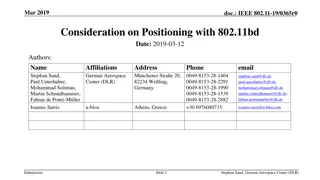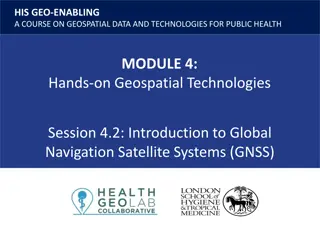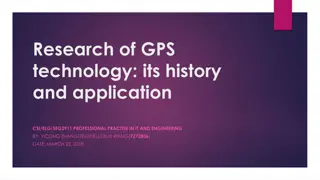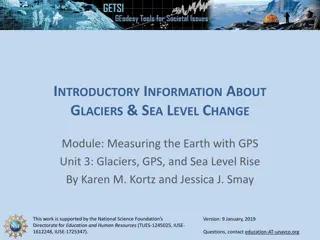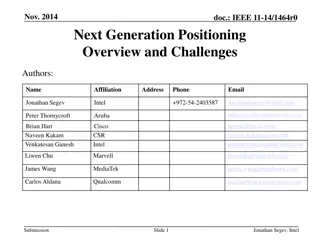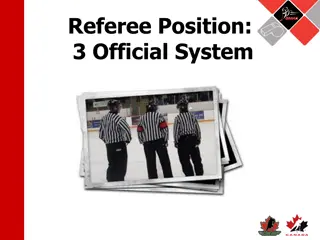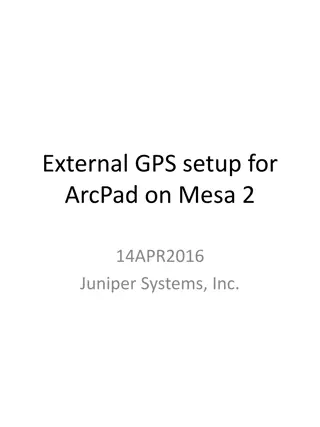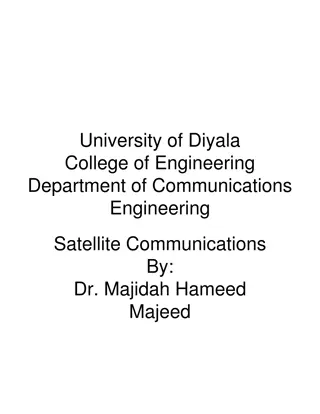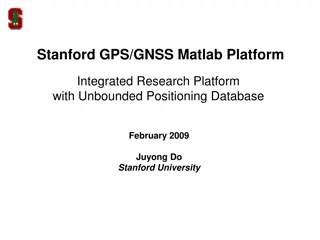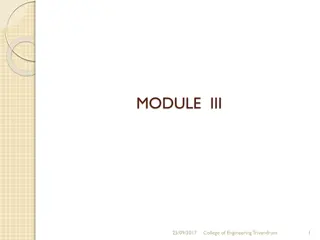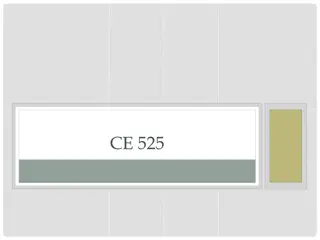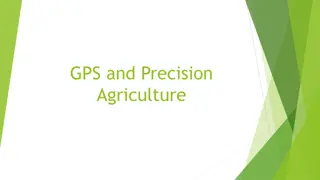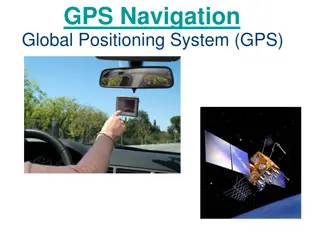Understanding Global Positioning System (GPS) Technology
Explore the invention and evolution of GPS, its safe handling, examples of GPS receivers, how GPS works through satellite communication, and the role of satellites in GPS technology. Delve into receiver initialization methods for accurate location services.
Download Presentation

Please find below an Image/Link to download the presentation.
The content on the website is provided AS IS for your information and personal use only. It may not be sold, licensed, or shared on other websites without obtaining consent from the author. Download presentation by click this link. If you encounter any issues during the download, it is possible that the publisher has removed the file from their server.
E N D
Presentation Transcript
GLOBAL POSITIONING SYSTEM (GPS) Invented by the US Department of Defence First used by the US Army (DoF) In the 1980s the US DoD allowed civilians to use GPS No subscription fee to use a GPS A number of GPS types; Garmin (GPS II, III, V, 76), Trimble (Juno 3B, Juno 3D, Juno SB .. GPS memory lasts long It has a strong lithium battery
Examples of GPS Receivers Garmin Trimble (High sensitivity GPS receiver)
SAFE HANDLING OF GPS RECEIVERS Do not expose the machine to water Do not place it near fire (Excessive heat) Always press GPS buttons gently and carefully Ensure that your fingers are clean before pressing the buttons Avoid unnecessary dropping of the machine Do not give it to unauthorized people In case of mechanical problems do not open the machine, take it to authorised technician Remove the batteries if GPS is not to be used for a long time Always wear the GPS string when mapping
How does a GPS work?
HOW IT WORKS Communicates with satellites Signals sent from satellites Time difference between when signal was sent and when received by GPS is noted GPS locates the place where you are standing (Triangulation method) Easting, Northing and altitude on your GPS can now be recorded GPS can now guide the user to get other pieces of information such as distance from destination, direction to take, Speed
Satellites Satellites are manufactured Have a life time (10 yrs) There are 24 GPS satellites that orbit the Earth surface twice in less than 24hrs Powered by solar energy but with stand by batteries in case of a solar eclipse
RECEIVER INITIALISATION Telling the GPS where you are Different approaches for different machines
RECEIVER INITIALISATION; When? When you have just acquired it from a shop If the memory has been cleared
GPS Receiver Setting (GPS 76) Switch on your GPS receiver Click on menu twice Main menu appears with a number of options Use the lower button on the Rocker key pad and select setup, press enter button On the main menu, select general, a number of options For MODE select Normal, WAAS select off, Back light time out, eg 15 secs,
Set up-Contd Under beeper, may select off, for language, select ENGLISH Use the the button on the top of Rocker key pad to go back to main menu and select TIME Now use the button on the bottom part of the Rocker key pad to move down For time format choose 12 Hrs For time zone choose OTHERS For UTC off set choose +03:00 Current date: auto Current time: auto
Set up-cont Now go back to the main menu Use the button on the right part of the Rocker key pad and select UNITS Now explore the options under Units For elevation choose meters For depth select meters For distance and speed choose metric For temperature select Celsius
Set up contd For direction display choose numeric degrees Back to main Menu and select LOCATION For location format, select UTM UPS For map Datum select WGS 84 For north reference select Grid Go to main Menu and high light INTERFACE Go thru the options and select Garmin, Set up is now complete and yr GPS is ready for use
ERRORS IN COORDINATES Poor training Wrong settings Bad weather Poor hand writing Poor condition of GPS receiver Being in a hurry while taking coordinates Using incapable surveyor to collect data Doctoring coordinates No punitive measures by MWE for those who submit wrong coordinates



